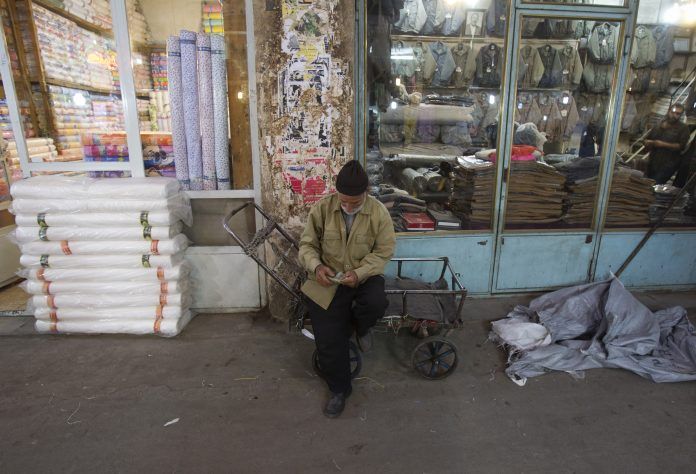
During a Dec. 11 cabinet meeting, Iranian President Hassan Rouhani said the director of the Imam Khomeini Relief Foundation Morteza Bakhtiari had assured him that extreme poverty had been completely eradicated in the country.
“I made two promises to the Iranian people at the start of the 12th cabinet [formed August 3, 2017],” President Rouhani said in footage of the cabinet meeting published by the semi-official Fars news agency. “I pledge to place those two issues at the top of my government’s agenda. I said the government’s main priorities were to tackle unemployment and eradicate poverty.”
“We have fulfilled our promises,” President Rouhani added. “At a large gathering recently, the director of the Imam [Khomeini Relief] Foundation assured me that extreme poverty was a thing of the past. He said that absolute poverty did not exist in the country any longer.”
Mr. Rouhani’s assertion contradicts recent comments by Hojjatollah Abdolmaleki, the head of the Imam Khomeini Relief Foundation’s office for employment and social welfare, who said that the foundation had provided financial aid to an additional 600,000 disadvantaged families in the past year.
Appearing on the Islamic Republic of Iran Broadcasting (IRIB) TV program entitled “Manager in Charge,” Mr. Abdolmaleki explained that the number of people living under the poverty line had exploded in recent years.
“Close to 600,000 additional families came under the care of the foundation,” Abdolmaleki noted. “Nearly 1.5 million families were already receiving aid from the foundation. The total number has risen to 2.1 million now.”
[aesop_image img=”https://kayhanlife.com/wp-content/uploads/2018/08/2012-01-16T120000Z_1270201308_GM1E81H01TI01_RTRMADP_3_IRAN.jpg” panorama=”off” credit=”FILE PHOTO: Local Baluch women rest in the courtyard of their house in Tiss village in the suburb of the port city of Chabahar 1,452 km (902 miles) southeast of Tehran, near Strait of Hormuz. REUTERS/Raheb Homavandi” align=”center” lightbox=”off” captionsrc=”custom” captionposition=”left” revealfx=”off” overlay_revealfx=”off”]
“In 2017, we studied the circumstances of many poor and disadvantaged families who received aid, trying to determine the minimum living cost that would meet their needs,” Abdolmaleki added. “Some 53 percent of them said that they would not need financial aid if they had jobs.”
According to the deputy director of the Imam Khomeini Relief Foundation Hossein Samsami, the number of families that receive financial aid is much higher than 2.1 million.
“The foundation is helping 4 million families,” Mr. Samsami was quoted by the Iranian Students News Agency as saying on November 14. “The foundation would be $2.6 billion in deficit if it provided food to all 16 million families that live under the poverty line.”
According to the Majlis (Iranian Parliament) Research Center, the total number of families that have been forced into poverty in the country will reach 57 million by the end of the current Iranian calendar (year ending March 20, 2020).
The government’s 2020-21 budget earmarks $390 million for expenses and $814 million in subsidies for the Imam Khomeini Relief Foundation.
“The funding in the government’s budget for next year will only cover 46.7 percent of the foundation’s total running cost,” the director of the Imam Khomeini Relief Foundation Morteza Bakhtiari was quoted by the Khabar Online news as saying on December 15. “Donations make up the rest. In 2017, we started a study in 32 townships on the cost of food and clothing to people living under the poverty line. Our findings were alarming.”
The government’s 2020-21 budget has also earmarked $738.5 million for the State Welfare Organization of Iran.
[Translated from Persian by Fardine Hamidi]

